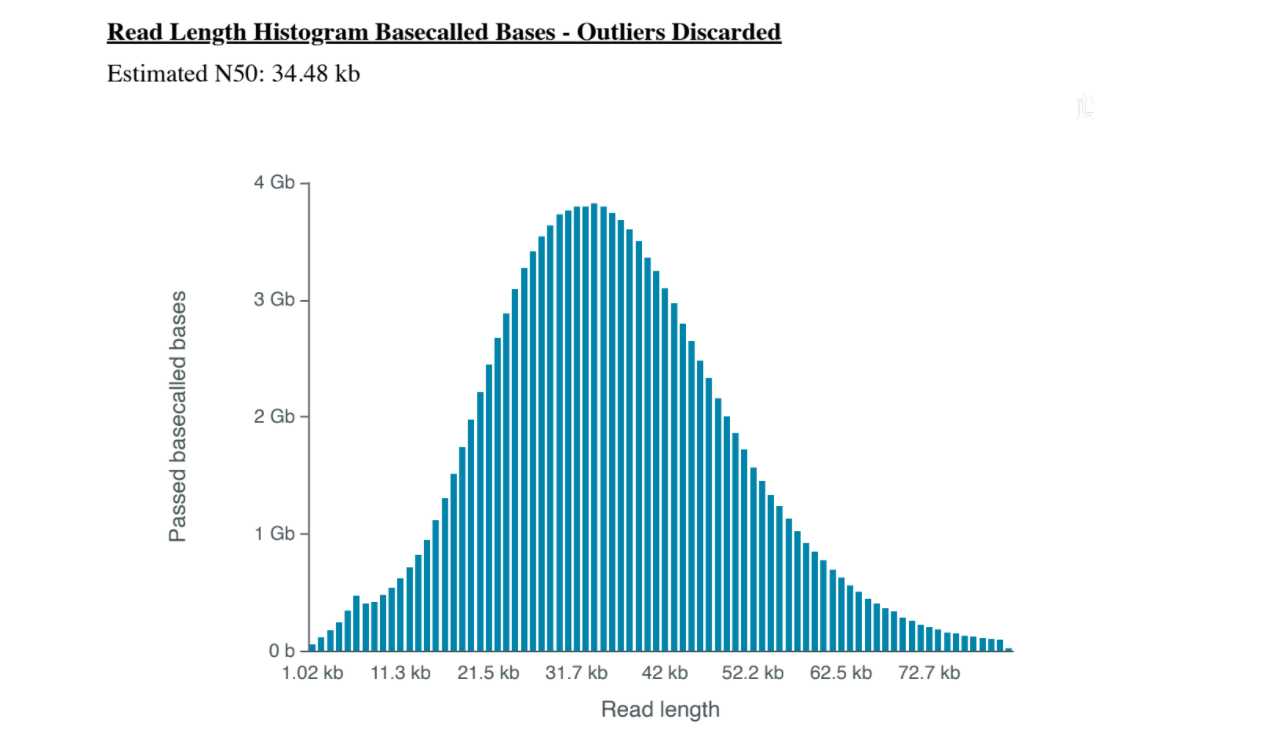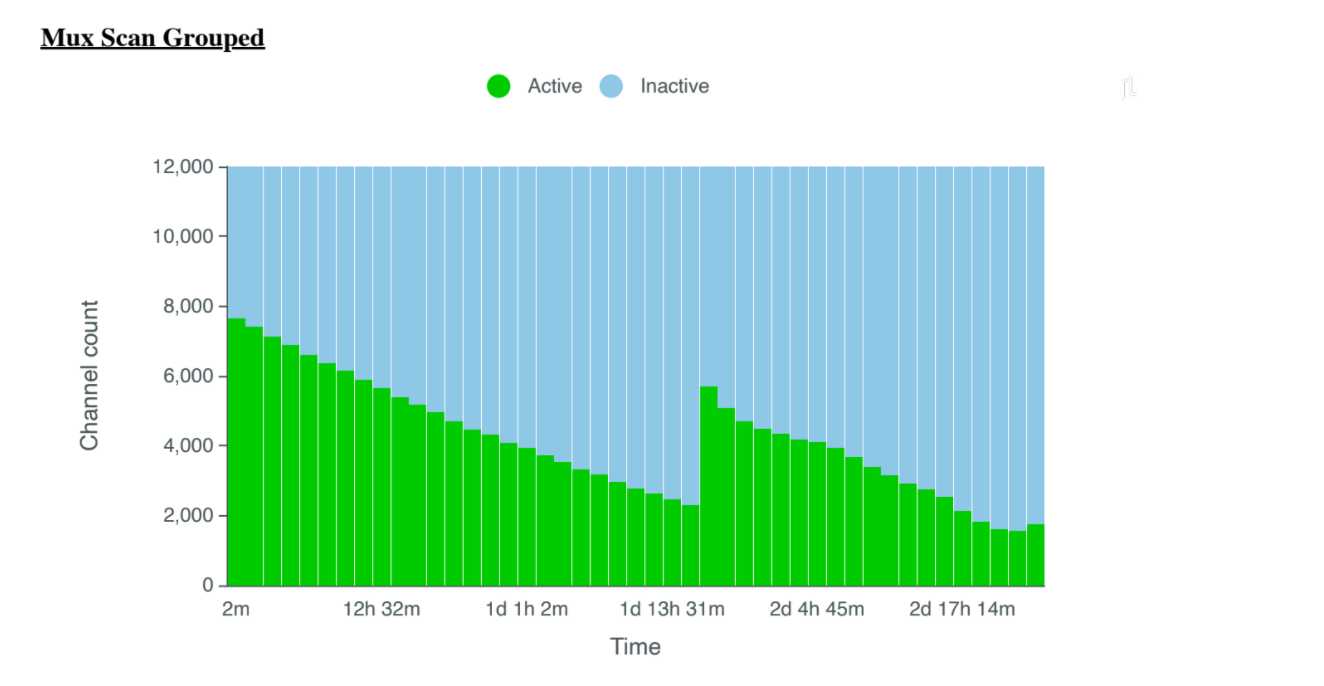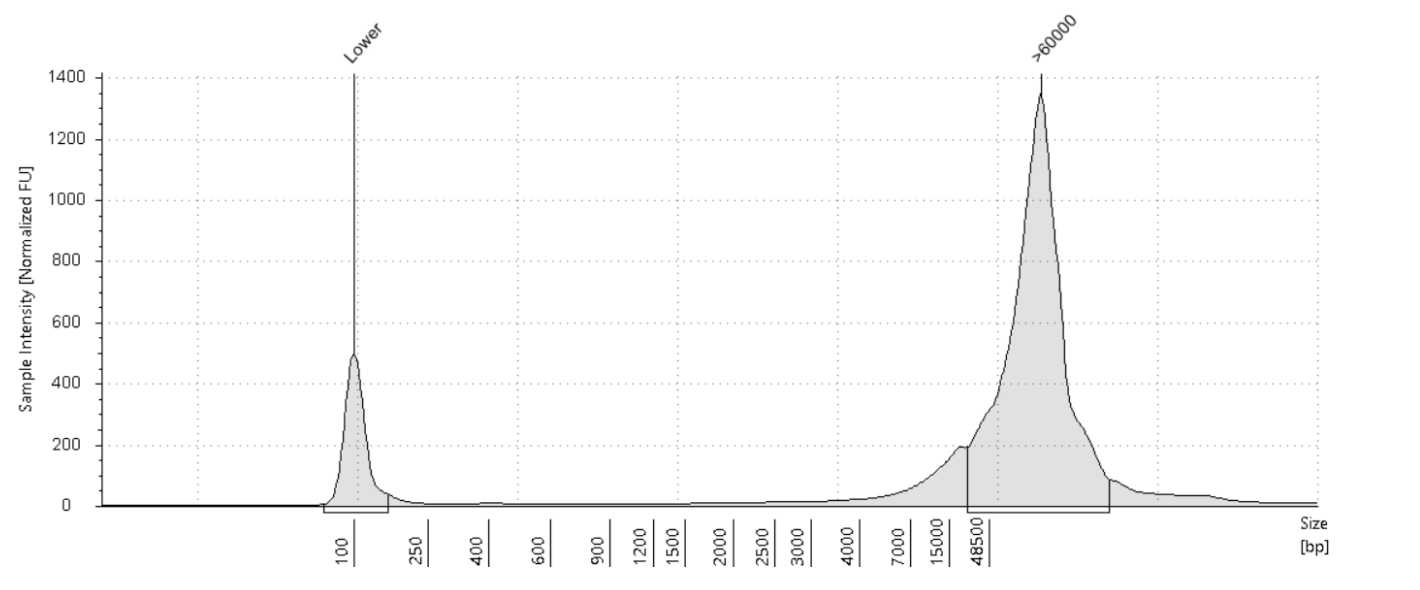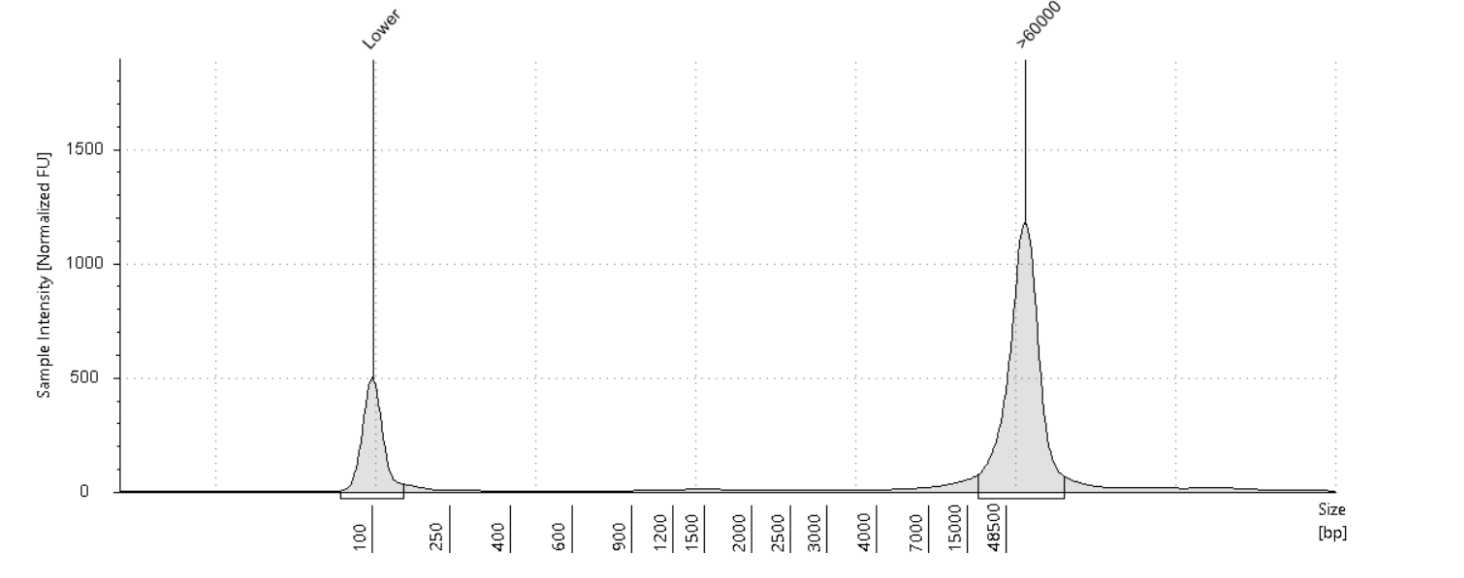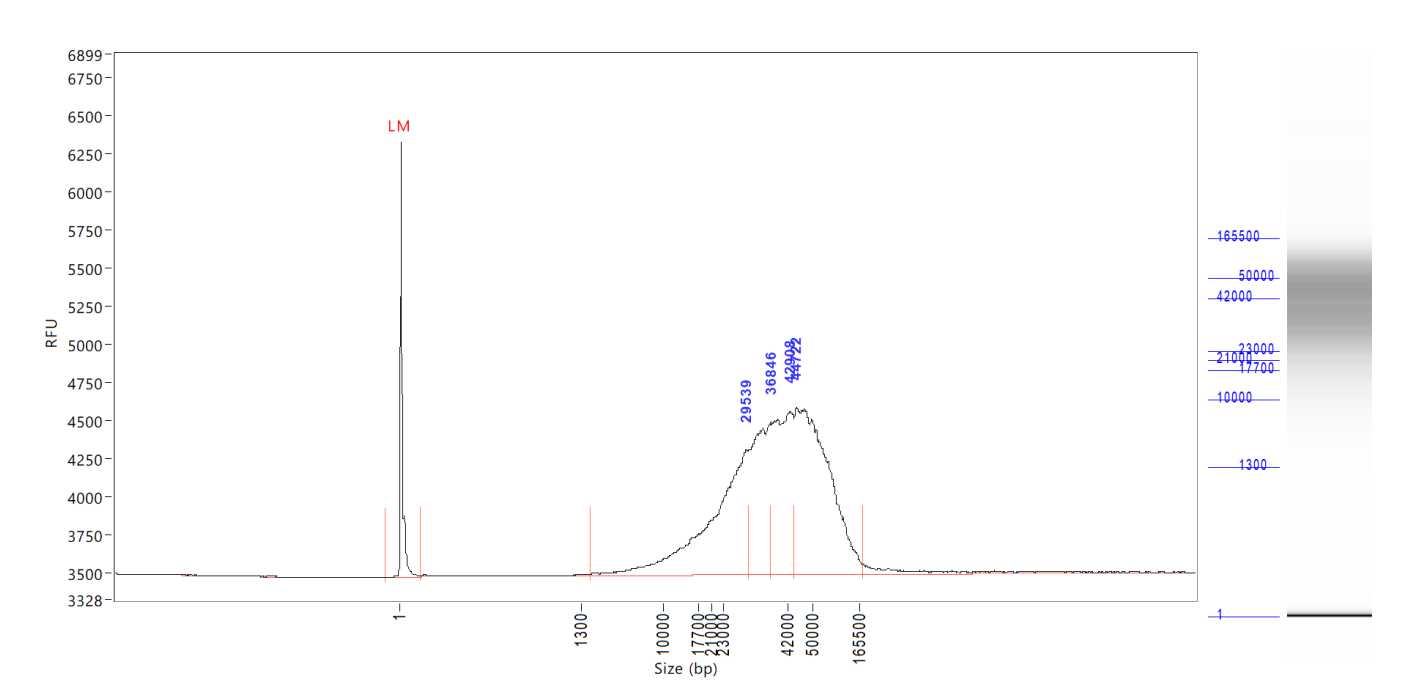Processing frozen human blood samples for population-scale Oxford Nanopore long-read DNA sequencing SOP
Kimberley J Billingsley, Pilar Alvarez Jerez, Cornelis Blauwendraat, on behalf of the CARD Long-read Team, Abigail Miano-Burkhardt
Disclaimer
In development
We are still developing and optimizing this protocol.
Abstract
Abstract:
As part of the GP2 initiative we will generate long-read sequencing data for ~1000 samples to better understand the genetic architecture of Parkinson's disease. To generate this large-scale Nanopore data we have developed a protocol for processing and long-read sequencing frozen human blood samples, targeting an N50 of ~30kb and ~30X coverage.
Acknowledgements:
We would like to thank the Nanopore team (Androo Markham &Hannah Lucio), Circulomics Inc team (Jeffrey Burke, Michelle Kim, Duncan Kilburn & Kelvin Liu) and the whole CARD long-read team listed below => UCSC : Benedict Paten, Mikhail Kolmogorov, Miten Jain, Kishwar Shafin, Trevor Pesout; NHGRI : Adam Phillippy, Arang Rhie; Baylor: Fritz Sedlazeck; JHU : Winston Timp; NINDS: Sonja Scholz; NIA : Cornelis Blauwendraat, Kimberley Billingsley, Frank Grenn, Pilar Alvarez Jerez, Bryan Traynor, Shannon Ballard, Caroline Pantazis; CZI : Paolo Carnevali. This protocol was optimized using frozen blood samples from the PPMI initiative. PPMI – a public-private partnership – is funded by the Michael J. Fox Foundation for Parkinson’s Research and funding partners, a full list of the PPMI funding partners can be found at www.ppmi-info.org/fundingpartners .

Steps
Part 1: Preparing Blood Samples (~20 mins for 8 samples) )
Obtain blood samples from -80C freezer and thaw at 37°C for 0h 15m 0s
**Note:** This is specifically for 6mL tubes, if starting with only 1mL thaw until warm (\~ `0h 5m 0s`)
Inversion mix blood x10.
Note: The blood sample needs to be very thoroughly mixed in order to ensure better DNA isolation.
Note: We will be taking 1mL forward. If your samples have a volume larger than1mL, aliquot 1mL out into tubes and keep frozen at-80°C until ready to use. It is important to limit the amount for free/thaw cycles as much as possible, protocol will work best at the first thaw cycle.
Part 2: Kingfisher Apex Nanobind CBB Big DNA protocol (~2 hours for 8 samples)
We will be using the Nanobind CBB Big DNA Kit or Nanobind Tissue Big DNA Kit from Circulomics.
Prepare the Kingfisher 24 deep well plates as follows:
Plate 1 : Lysis Binding: 1000µL Whole Blood + 100µLProteinase K + 1000µLBuffer BL3 + 100µLRNase A
Plate 2 : Comb tip: 24 Flex tip comb
Plate 3 : Nanobind storage: 4mm nanobind disks
Plate 4 : CW1 Wash:2000µLBuffer CW1
Plate 5 : CW2 Wash 1: 2000µL Buffer CW2
Plate 6 : CW2 Wash 2: 2000µL Buffer CW2
Plate 7 : Elution: 200µL Buffer EB
Run Kingfisher program: 220325_Nanobind_KF_Flex_Blood_1mL_v57
(available upon request from Circulomics)
After ~1h 1m 40s when the program pauses, add 1625µLIPA to lysis binding plate.
After the program ends transfer eluate to a 1.5mL Eppendorf DNA LoBind tube.
Let samples rest overnight at RT.
After overnight rest at RT, DNA can be stored at 4°C for up to four weeks, or -80°C indefinitely.
Part 3: Pre-size selection DNA Quantification (~30 minutes for 8 samples)
Hand-shear each sample 10X with 1mLLuer-Lock syringes and 1.5” needles (bringing sample up into needle and depressing plunger counts as 1 cycle).
Quantify by taking triplicate measurements (top, middle, bottom) on the Qubit. If consistently getting low variation between measurements, can switch to just one.
If the CV is greater than 10%, further hand shearing is needed. Shear another 10x and perform triplicate Qubit measurements. Repeat this until the CV is less than 10% between the triplicate measurements. Once achieved, perform triplicate measurements on the Nanodrop and size on the Agilent Tapestation 4200.
Once all the samples are properly quality controlled, move on to size selection.
Note: Blood DNA recoveries after Kingfisher are very variable per sample and per run. If recovery is very low (<5ug) repeat Parts 1-3 with 2 x 1mLof sample in question. If either of the extra runs has a good recovery, move on with that DNA. If all three are bad, you can pool them together to reach DNA target amount.
Part 4: Size selection (~1:15 hours for 8 samples)
Note: If you have to pool multiple 1mL runs for a sample, it is possible that the concentration will be <50 ng/uL. If it is lower, a clean up step here may be used to re-elute the pool into a smaller volume to increase the concentration.
Ensure your samples are between 50-150 ng/uL. More concentrated samples will need dilution with TE buffer, Buffer EB, or water. Size selection is not recommended for samples below 50 ng/uL.
Add200µL of fresh 70% EtOH and centrifuge at 10,000 xg for 0h 2m 0sat RT.
Note: Do not mix after adding EtOH.
Carefully remove EtOH wash without disrupting the pellet.
Repeat steps 4.9-4.10.
Add 50-100 uL of Buffer EB at let incubate at RT for 20 minutes.
After 0h 20m 0s flick the tube to ensure proper mixing.
Start a micro centrifuge at 10,000 x g and 25°Cfor 0h 5m 0swhile preparing the samples.
In the meantime, place the necessary sample volume for at least 6000ng into a 1.5mL Eppendorf DNA LoBind tube.
Note: Size selection may lose between 40-60% of material so if available start with > 8000 ng.
To each sample, add equal volume of Buffer SRE from the Circulomics Short Read Eliminator Kit.
Mix thoroughly by gently tapping the tube or by gently pipetting up and down.
Load tube into the microcentrifuge with hinge facing out.
Note: Inserting tube with the hinge out is crucial to avoid aspirating the pellet if not visible in later steps.

Centrifuge at 10,000 x g for 0h 30m 0sat RT.
Carefully remove the supernatant without disrupting the DNA pellet. Pellet may not always be visible but will have formed on the bottom of the tube under the hinge region. Pipette from the opposite wall (thumb lip side of tube).
For very viscous DNA the pellet may not initially form tightly and can lead to easy aspiration of DNA. If this is the case, remove as much supernatant as possible but leave behind what you cannot pipette without aspirating DNA.
Note: Pellet will be tighter after the EtOH wash.
Part 5: Post-size selection DNA quantification (~10 minutes for 8 samples)
Analyze size selection recoveries via Qubit.
Note: Quantification post size-selection can be difficult. If necessary, gently pipette mix the sample x5 before quantification to homogenize. The most accurate quantification will come after Megaruptor shearing in Part 6, but an estimate of DNA concentration is important in this step to standardize the samples going into shearing.
Part 6: Shearing (~1:30 hours for 8 samples)
In a Diagenode DNA Fluid + tube, make up the size selected sample to 150µL and 40-50ng/uL with H2O or TE Buffer.
Note: It is ok if target concentration cannot be reached for all samples. If concentration differs from this range, make sure the Megaruptor 3 shearing settings are updated to reflect your sample concentration. If shearing more than one sample try to get all the concentrations to be as close as possible to this target range and/or to each other.
Attach the DNA Standard needle onto the tube and push the entire item into the Megaruptor 3 slots until it fits snugly. If running fewer than 8 samples, put the tubes in the 1st and/or 8th slots, working your way in.
Note: Samples should always be balanced, if running an odd number of samples, samples can be balanced with an empty corresponding tube.
Shear once at speed 20 (takes around ~1h 12m 0s).
Once finished, remove the item from the Megaruptor 3 and carefully remove the needle from the tube. Make sure the plunger is fully depressed in order to avoid losing sample.
Avoid any vortexing of the DNA from this point on to avoid any unnecessary further shearing, instead mix by gently flicking the tube and spin down.
Part 7: Post- shearing DNA Quantification (~30 minutes for 8 samples)
See Figure 4 for an example of a normal TapeStation trace post-size selection
Upload the tapestation reports and quantifications to tracking google sheet.
At this point, at least 3µgof DNA is necessary to move on to library prep.
The DNA can be stored at 4°Cfor up to four weeks, or -80°Cindefinitely.
Part 8: Library Prep (~6 hours, including reloads but not including flushing and returning cells)
Note: Library prep is the same as the brain library prep with one exception. In step 8.1A we mix beads into the sample by flicking and not pipetting up and down. Additionally, loading amount for blood is 400 ng/load.
A. DNA Repair and End-Prep
- Place all the necessary reagents on ice to thaw and the Agencourt AMPure XP beads out at room temperature.
- Prepare the following in a 0.2 mL thin-walled PCR tube:
48µLDNA (input 3ug, this might be over 48 μL but that is fine. Adjust the amount of beads to match the total volume of this mixture (sample + buffer + enzyme)3.5µLNEBNext FFPE DNA Repair Buffer (vortex and spin down)3.5µLUltra II End-prep reaction buffer (vortex and spin down)3µLUltra II End-prep enzyme mix (do not vortex, spin down)2µLNEBNext FFPE DNA Repair Mix (do not vortex, spin down)
-
Mix thoroughly by gently flicking the tube or very gently pipetting up and down x10, and then spin down.
-
Using a Thermocycler, incubate samples at
20°Cfor0h 5m 0sand65°C
for0h 5m 0s .
- Start and pause Thermocycler to allow lid to come to
85°Cbefore putting samples in.
-
Allow Thermocycler to cool to
4°Cand then remove your samples. -
Resuspend the AMPure XP beads by vortexing.
-
Transfer DNA samples to clean 1.5 mL Eppendorf DNA LoBind tube.
-
Add
60µL(or equivalent volume, see step 2) of resuspended beads to the reaction and mix by flicking the tube x10. Do not pipette mix here as beads may clump around pipette tip. -
Incubate for
0h 5m 0sat room temperature. -
Prepare
500µLper sample of fresh 75% ethanol in nuclease-free water. -
Spin down and pellet sample on magnet until eluate is clear and colorless, about
0h 2m 0s. -
Pipette off the supernatant and retain, just in case the following quant is uncharacteristically low.
-
With the samples remaining on the magnet, wash the beads with
200µLof 75% ethanol, pipetting on the opposite wall making sure not to disturb the pellet. Count to 3 and remove and discard ethanol.
Note: The goal here is to make sure the beads are fully covered, if initial volume of beads was significantly higher than 60uL, more ethanol may be used.
-
Repeat previous step.
-
Spin down and place the tube back on magnet, pipetting off any residual ethanol.
-
Allow to dry for ~
0h 0m 30sbut do not over-dry. -
Remove the tube from the magnetic rack and resuspend the pellet in
61µLnuclease-free water, incubate for0h 3m 0sat RT gently flicking every so often. -
Spin down and pellet the samples on a magnet until eluate is clear and colorless.
-
Remove and retain
61µLof eluate into a clean 1.5 mL Eppendorf DNA LoBind tube. -
The sample concentration must be > 25-30 ng/uL. If the sample does not reach this requirement restart from Part 6.
-
It is possible to store samples at
4°Covernight at this step if needed.
B. Adapter Ligation and Clean-Up
- Spin down the AMX-F, Quick T4 ligase, and LNB, then return to ice. Note: Do not allow AMX-F to remain at room temperature for too long.
- Thaw LNB at RT and mix by pipetting up and down (vortexing is ineffective due to viscosity).
- Thaw EB at RT, mix by vortexing, spin down, and place on ice.
- Thaw SFB at RT, mix by vortexing, spin down, and keep at RT.
- In a 1.5 mL Eppendorf DNA LoBind tube, mix the following in order:
60µLl DNA sample (if not 60uL, make up with water)25µLLNB10µLQuick T45µLAMX-F 6 Mix by gently flicking the tube and spin down.
-
Incubate the reaction for
0h 10m 0sat RT. -
During this time, put flow cells out at RT.
-
Resuspend beads by vortexing.
-
Add
45µLof resuspended beads to the reaction and mix by flicking. -
Incubate for
0h 5m 0sat RT. -
Spin down sample and pellet on magnet.
-
Pipette off the supernatant and retain, just in case the final elution quantification is uncharacteristically low.
-
Wash the beads with
250µLSFB, remove from magnet and flick to resuspend, spin down and repellent on magnet and then remove and discard supernatant. -
Repeat previous step.
-
Spin down and place the tube back on magnet, pipetting off any residual SFB.
-
Allow to dry for ~
0h 0m 30s, but do not over-dry. -
Remove the tube from magnet and resuspend pellet in
25µLEB, spin down, and incubate for0h 20m 0sat37°C -
During this time, QC the flow cells (only use flow cells with >6000 pores).
-
Pellet the beads on magnet until eluate is clear and colorless.
-
Remove and retain
25µLof eluate into a clean 1.5 mL Eppendorf DNA LoBind tube (this is the DNA library). -
Quantify samples on Qubit.
-
Reprep library from Part 6 if < 800 ng.
Note: 800 ng will be enough for two loads, if you need more data output after sequencing you will need three loads and at least 1200 ng at this step.
- Keep libraries on ice until ready to load on flow cell.
C. Priming and Loading Flow Cell
- Thaw SBII, FLT, and FB, vortex, and spin down.
- Thaw LBII.
- Add
30µLof thawed and mixed FLT directly to tube of FB and vortex. - Expose inlet port on flow cell, set P1000 pipette to
200µLand draw back a small amount of volume to remove any air bubbles (usually about 20-30 μL, just until a small volume of buffer enters the pipette tip). - Flush
500µLof Priming Mix into the inlet port of the flow cell, being extremely careful to avoid the introduction of air bubbles at the end. - Wait
0h 5m 0s - During this time, separate the DNA library into two or three equal aliquots of 400 ng each. Bring each aliquot up to
24µLwith EB. (i.e, if your final elution is exactly 1200 ng in 24 uL, move 8 µL to three separate tubes and add 16 µl of EB to each) - Prepare the first library mix for loading:
75µLSBII (vortex and spin down)51µLLB (pipette up and down immediately before use)24µLDNA library in EB (400 ng)
-
Load all
150µLof the library mix. -
Close valve to seal inlet port and close PromethION lid.
-
Wait
0h 10m 0sand then initiate sequencing. -
Ideally, the library quants yielded at least 1200 ng to allow for 3X 400 ng loads, the latter 2 loaded approximately after 24 and 48 hours. However this will vary slightly depending on pore usage, data generated, as well as other factors i.e. if after 24 hours there are still +3000 pores then the sample does not need to be reloaded until 48 hours For blood, two loads is usually enough to achieve 30x coverage,
-
To wash and reload a flow cell, begin by thawing Wash Mix (WMX) on ice and Wash Diluent (DIL) at RT Note: DIL should be vortexed. WMX should NOT be vortexed, only spun
-
In a new tube, add
2µLWMX into398µLDIL and pipette mix -
Pause the PromethION runs and export .pdf reports
-
With inlet port 1 closed, remove waste from port 2 or 3
-
Rotate the inlet port cover to reveal inlet port 1
-
Using a P1000, insert tip into inlet port and draw back a small volume using the wheel to remove any air (usually around 20-30 μL)
-
Load 400 µlFlow Cell Wash Mix into the inlet port, avoiding any introduction of air
-
Wait
1h 0m 0s -
Repeat priming steps and reload samples (steps 1 - 12)
D. Flushing and Recycling Flow Cells (~15 minutes per set of 4 flow cells)
- Following the completion of the sequencing, flow cells may be removed from the sequencer.
- Place enough absorbent material to take up approximately 4 mL of flush waste.
- Rotate valve to reveal inlet port 1.
- Place flow cell at a 45° angle on the absorbent material and, using a P1000, flush 1 mL of DI water into the inlet port.
- Repeat 3 more times for a total of 4 mL.
- Once complete, close the input port cover and remove all liquid from the waste port.
- Dispose of absorbent material as local biological waste guidelines dictate.
- Return flow cells to clear plastic tray in which it was shipped, making sure to record the flow cell IDs.
- Seal the tray with the sticker provided in the packaging.
- Put the clear plastic lid back on the tray.
- Place the tray back in the packaging.
- Place packaged cells in the returns box (large box can hold 80).
- Once returns box is filled, follow the instructions here here and follow the prompts to request the box to be sent back to Nanopore.
Sequencing results:
Following 72 hours of sequencing the sample should yield an N50 ~ 30kb with a data output ~ 100-160GB .
#尊敬的用户,由于网络监管政策的限制,部分内容暂时无法在本网站直接浏览。我们已经为您准备了相关原始数据和链接,感谢您的理解与支持。
https://lh3.googleusercontent.com/5AXxXri-4Cm8YDkk9LLZx8XO1qUcuOWBgR7n03hgxTl6HJT7KY_H6XjeajnI9HZBZOzDHOe9nOEAEMMsHP4Tvnq3eFJnFAk2YijFS7NhfZmVW7iu9O1TnzRKhtkeeONdDbiEXHmT
